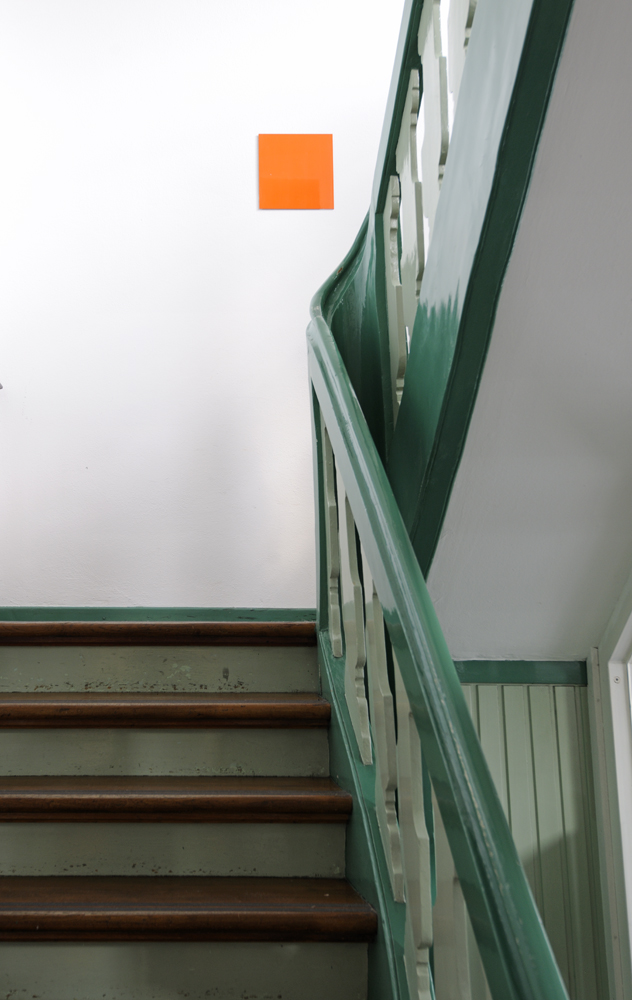Vorgang-Zustand / Process Status







Cologne-artist Lutz Fritsch’s works typically aren’t complete without the viewer’s imagination. They consist of several elements in different locations that can’t be observed simultaneously. It is only when mental connections are drawn that they result in a joint, coherent image.
In this way, the artist creates a relationship that goes beyond the specific locations – which are often already historically or geographically connected; the space and distance between the elements become an integral part of the work. This artistic approach culminated in an attempt to throw a snowball from the Arctic into the Antarctic in 2005.
The work at Schumann-Haus consists of four square yellow stelae and four orange square aluminum panels. The stelae create a link between the three buildings that were originally one property: in front of one of the buildings there is a pair of stelae, while the other two are each marked by one stele.
The orange-colored panels were installed in the building entrance areas, making the connection to the outside space and the other buildings visible. Viewers are encouraged to interact with this newly defined structure and notice that their own perception in space is essential for their experience of reality.
Lutz Fritsch
← Zur Startseite
Bonn, Schumann-Haus, Sebastianstraße 182



